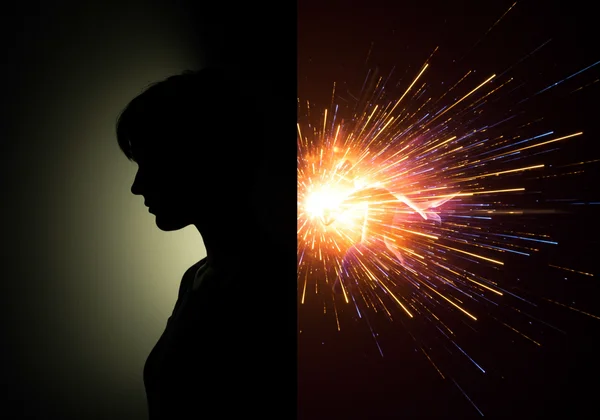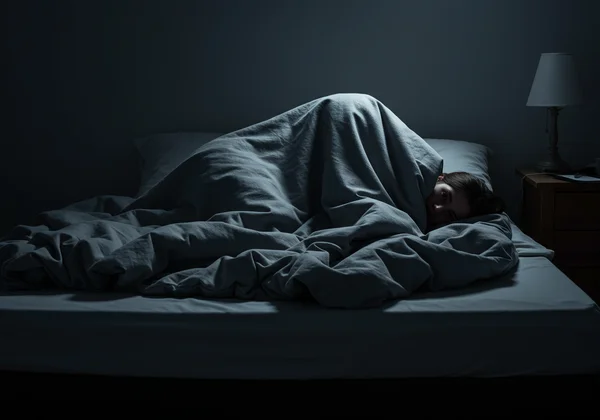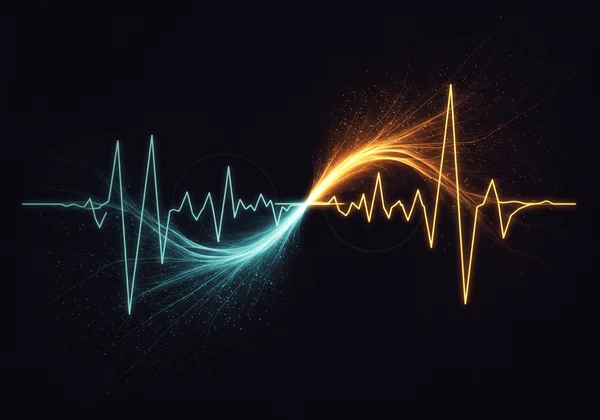Bipolar Depression: Symptoms, Differences, & How a Bipolar Disorder Test Can Help
Do you ever feel like your episodes of sadness are more than just a low mood? It’s a profound, heavy feeling that seems distinct from what others describe as depression. You might also experience periods of high energy or irritability that you can't quite explain. If this sounds familiar, you could be dealing with bipolar depression. What are the 5 signs of bipolar? Understanding this specific type of depression is the first crucial step toward clarity and finding the right support for your unique mental health journey.
The journey to understanding your emotional landscape can feel confusing and isolating. Bipolar depression shares many traits with other mood disorders, yet it has unique characteristics that set it apart. Recognizing these differences is vital. This article will explore the specific symptoms of a bipolar depressive episode, highlight how it differs from unipolar depression, and explain why this distinction is critical for your well-being. Gaining knowledge can bring clarity, and a great way to start is by exploring your experiences with a preliminary self-screening.

Understanding Bipolar Depressive Symptoms
When people talk about bipolar disorder, the focus is often on the manic "highs." However, the depressive "lows" are a significant and often debilitating part of the condition. In fact, individuals with bipolar disorder frequently spend more time in depressive phases than manic or hypomanic ones. These periods are not just about feeling sad; they are complex episodes with a distinct set of symptoms that can profoundly impact every aspect of your life.
A key part of the experience is understanding the nature of these episodes. They are more than just passing sadness; they are persistent and pervasive shifts in mood and function. Recognizing what constitutes a depressive episode is essential for anyone trying to make sense of their emotional cycles.
What Defines a Bipolar Depressive Episode?
A bipolar depressive episode is characterized by a period of at least two weeks where a person experiences a low mood or a loss of interest or pleasure in nearly all activities. It’s a heavy blanket of despair that settles over everything. To be considered a clinical episode, this must be accompanied by several other symptoms that represent a noticeable change from your usual self.
Common symptoms include:
- Intense Sadness and Emptiness: A persistent feeling of hopelessness or despair that doesn't lift.
- Loss of Energy or Severe Fatigue: Feeling physically drained, as if even simple tasks require monumental effort.
- Changes in Sleep Patterns: This can mean sleeping far more than usual (hypersomnia) or being unable to sleep (insomnia).
- Feelings of Worthlessness or Excessive Guilt: Criticizing yourself harshly for things that are not your fault.
- Difficulty Concentrating: Your mind feels foggy, making it hard to focus, remember things, or make decisions.
- Suicidal Thoughts: Thinking about, planning, or attempting suicide. This is a serious symptom that requires immediate professional help.
Real-Life Examples of Bipolar Low Mood
Symptoms on a list can feel abstract. In daily life, a bipolar low mood might mean you can't get out of bed, not because you're tired, but because you feel a physical weight pinning you down. It’s canceling plans with friends not because you're busy, but because the thought of socializing is completely overwhelming. You might stop enjoying hobbies that once brought you joy, finding them bland and uninteresting.
For many, it also manifests as physical symptoms like unexplained aches and pains. The world can seem like it’s moving in slow motion, and your thoughts may become sluggish and negative. This isn't just a bad day; it's a fundamental shift in your ability to function and experience the world. If these patterns resonate with you, taking a bipolar screening questionnaire can be a confidential way to explore them further.

Bipolar Depression vs. Unipolar Depression: Key Differences
One of the biggest challenges in mental health is the frequent misdiagnosis of bipolar disorder as unipolar depression (also known as major depressive disorder). While both involve severe low moods, they are distinct conditions that require different treatment approaches. Using the wrong treatment can be ineffective and, in some cases, even harmful. This is why learning to spot the key differences is so important.
The crucial distinction lies not just in the lows, but in the presence—or history—of the highs. Understanding this can be a turning point, providing the clarity needed to have a more informed conversation with a healthcare provider. Taking a closer look at these differences can help you determine if your experience aligns more with the cyclical nature of bipolar disorder.
Beyond Sadness: Distinctive Features to Look For
While the core feeling of depression is similar, bipolar depression often presents with "atypical" features that are less common in unipolar depression. Paying attention to these subtle yet distinctive features can provide valuable clues.
These features can include:
- Hypersomnia: While some with depression have insomnia, sleeping for excessively long hours is more indicative of bipolar depression.
- Leaden Paralysis: A distinct physical sensation where your arms and legs feel heavy and difficult to move, as if they are made of lead.
- Increased Appetite and Weight Gain: Craving carbohydrates and gaining weight is another atypical feature more strongly associated with bipolar depression.
- Mood Reactivity: Your mood might temporarily lift in response to positive events, only to sink back down once the event is over.
The Overlooked Role of Mania or Hypomania
The single most important factor differentiating bipolar depression from unipolar depression is the history of mania or hypomania. A manic episode is a period of abnormally elevated energy, mood, and activity. Hypomania is a less severe version of this, which can be harder to recognize.
Many people don't realize their periods of high productivity, creativity, or irritability are actually hypomanic episodes. They might just see them as "good weeks." These highs are the other side of the bipolar coin. Because people often seek help during their lows, these highs can be overlooked. A comprehensive free bipolar disorder test is designed to ask about both the highs and the lows to help identify these critical patterns.

Why Differentiating Bipolar Depression Matters for Your Well-being
Getting the right name for what you're experiencing isn't just about a label; it's about unlocking the right path forward. The journey to mental wellness is highly personal, and starting with the most accurate information possible gives you the best chance for success. Misunderstanding the root cause of your depressive symptoms can lead to years of frustration and ineffective coping strategies.
With this knowledge, you become a more active participant in your care, better equipped to advocate for your own health. This is why taking the time to understand the nuances of bipolar depression is an act of self-care.
The Risks of Misdiagnosis and Ineffective Treatment
The consequences of misdiagnosis can be significant. Standard antidepressants, often prescribed for unipolar depression, can sometimes trigger manic or hypomanic episodes in individuals with bipolar disorder. This can worsen the cycling of moods and destabilize the condition. When treatment is not tailored to the unique cyclical nature of bipolar disorder, it can lead to ineffective treatment.
This can create a frustrating cycle where you feel like nothing works, leading to increased feelings of hopelessness. Correctly identifying the potential for bipolar disorder early on ensures that treatment plans, which often include mood stabilizers, are considered from the outset. This leads to safer and more effective management of symptoms.
Empowering Yourself with Accurate Insights
Gaining accurate insights into your mood patterns is the first step toward taking back control. When you understand that your depression may be part of a larger cycle that includes highs, your experiences begin to make more sense. This knowledge empowers you to track your moods, identify triggers, and communicate more effectively with doctors.
An initial screening can provide a structured way to review your symptoms in a private, non-judgemental setting. Tools like our confidential online test can help you organize your thoughts and provide a clearer picture to share with a professional. It's a proactive step toward building a foundation of self-awareness and seeking the right kind of help.

Taking the Next Step: Gaining Clarity on Your Mood Swings
Realizing your deep lows might connect to periods of high energy, or that your depressive symptoms have unique characteristics, can be a turning point. This understanding helps demystify your experiences and provides a clear path forward. Ultimately, recognizing that bipolar depression is distinct from unipolar depression is vital for your well-being.
You don't have to navigate this uncertainty alone. Taking a confidential, science-inspired self-screening is a safe and accessible first step. It can help you organize your experiences and provide preliminary insights that empower you to have a more informed conversation with a healthcare professional.
Take the first step toward clarity. Try our free tool today to better understand your mood patterns.
Frequently Asked Questions About Bipolar Depression
Is there a specific test for bipolar depression?
There is no single blood test or brain scan that can diagnose bipolar disorder. Diagnosis is made by a qualified healthcare professional through a comprehensive evaluation of your symptoms, experiences, and family history. However, a screening tool, like the confidential online bipolar disorder test on our site, can be an excellent first step. It is based on established questionnaires like the Mood Disorder Questionnaire (MDQ) and helps you identify potential signs to discuss with a doctor.
What are the key signs of bipolar depression?
The key signs include a persistent low mood or loss of pleasure for at least two weeks, combined with symptoms like severe fatigue, changes in sleep (especially oversleeping), feelings of worthlessness, and difficulty concentrating. Crucially, these depressive episodes occur in the context of also having experienced at least one episode of mania or the less severe hypomania (periods of elevated energy and mood).
How can I differentiate between unipolar and bipolar depression?
The main differentiator is the presence of manic or hypomanic episodes. While the depressive episodes can look similar, if you have also experienced distinct periods of elevated energy, racing thoughts, decreased need for sleep, and increased goal-directed activity, it points toward bipolar disorder rather than unipolar depression.
What's the next step after recognizing bipolar depressive symptoms?
If you recognize these symptoms in yourself, a great next step is to use a confidential screening tool to gather your thoughts and see if your experiences align with the patterns of bipolar disorder. After you get preliminary insights, the most important action is to schedule an appointment with a healthcare professional, such as a psychiatrist or therapist, for a full evaluation and formal diagnosis.
Disclaimer: This article is for informational purposes only and does not constitute medical advice. The content is not intended to be a substitute for professional medical advice, diagnosis, or treatment. Always seek the advice of your physician or other qualified health provider with any questions you may have regarding a medical condition. The screening tool on our site is an educational resource and not a diagnostic tool.